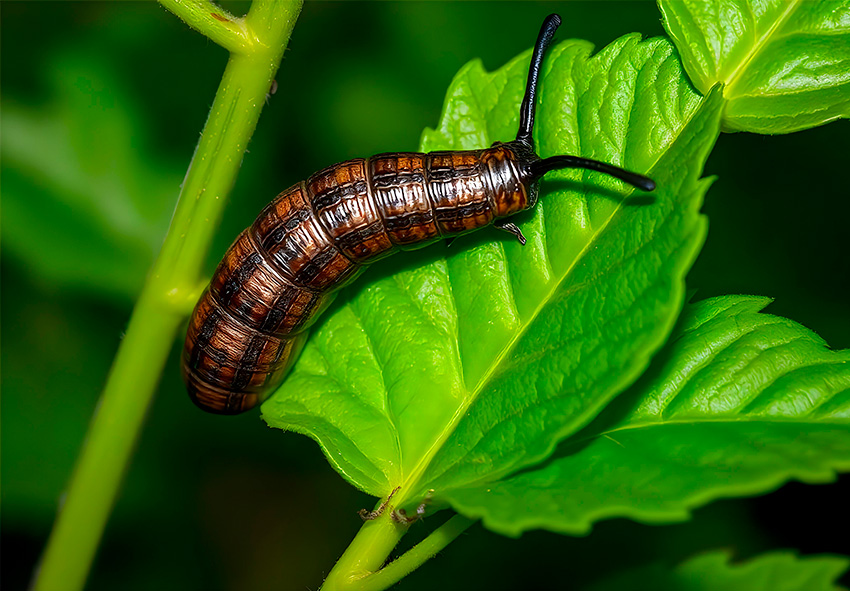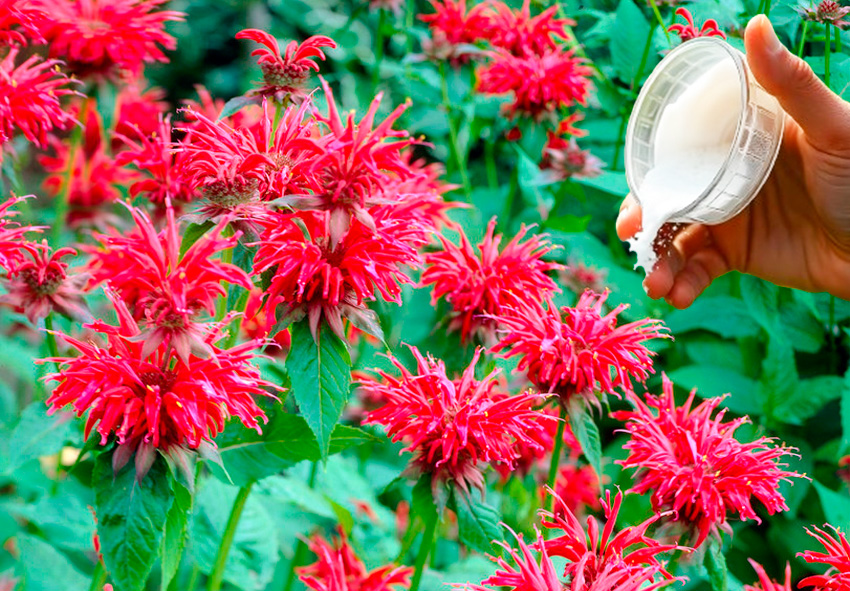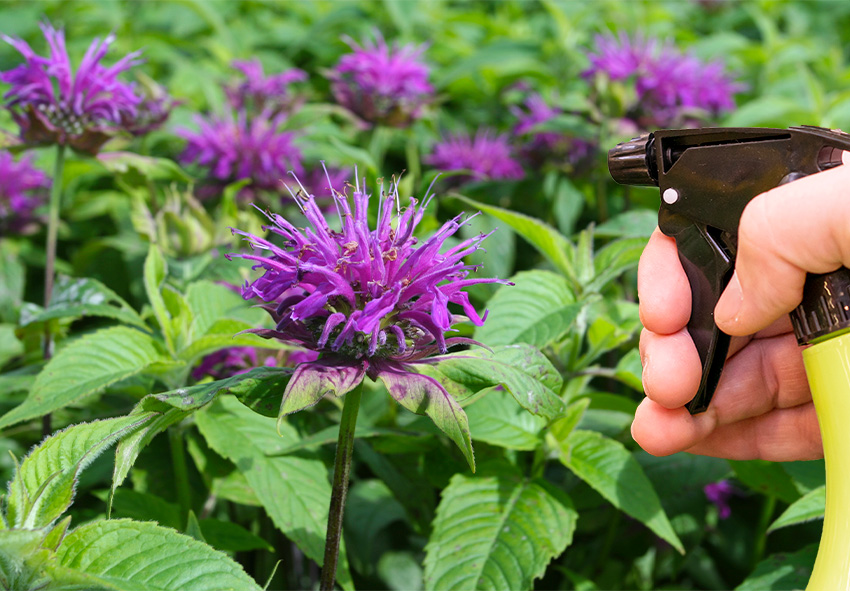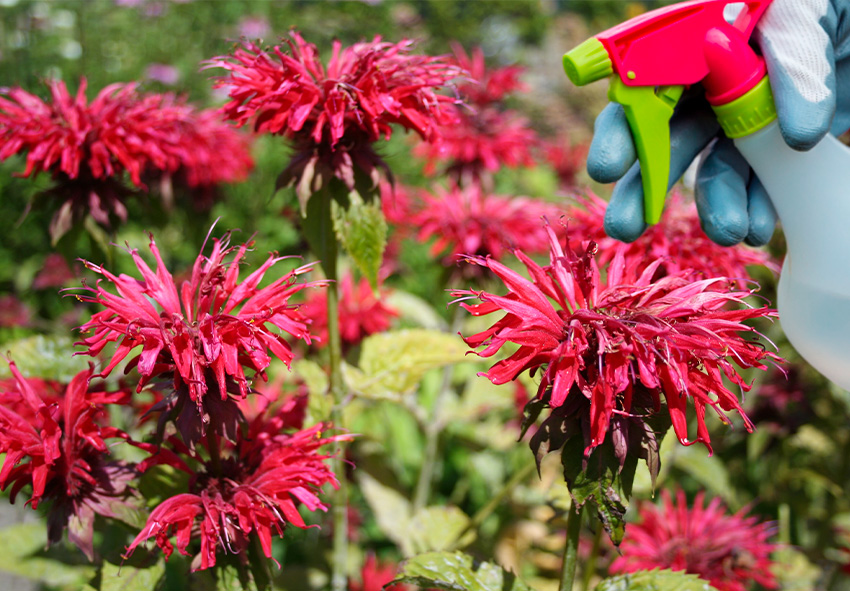Monarda, commonly known as Bee Balm, is a favorite in many gardens for its vibrant flowers and ability to attract pollinators like bees and butterflies. However, despite its hardiness, Monarda can sometimes be susceptible to pests and diseases that can impact its health and aesthetic appeal. In this article, we’ll explore the most common pests and diseases affecting Monarda, how to manage them, and strategies for keeping your plants healthy year-round. Our gardening blog is a perfect place to find all the information you need!
Common Pests Affecting Monarda

Monarda, while resilient, can still fall prey to a variety of pests that can damage its vibrant blooms and foliage. Common pests like aphids, spider mites, and leafhoppers can stunt growth and reduce the plant’s overall health. Understanding these pests and knowing how to manage them is key to keeping your Monarda thriving.
- Aphids
Aphids are small, soft-bodied insects that suck the sap from Monarda plants, leading to stunted growth and curled leaves. These pests can multiply quickly, causing significant damage if not controlled. Symptoms of an aphid infestation include yellowing or curling of leaves and sticky honeydew residue. You can manage aphids by spraying plants with insecticidal soap or introducing beneficial insects like ladybugs to feed on them.
- Spider Mites
Spider mites thrive in hot, dry conditions and are notorious for causing damage to Monarda. These tiny pests feed on plant juices, resulting in fine webbing on leaves and stippling (small yellow or white dots). If left unchecked, the leaves can become yellow and eventually drop off. To control spider mites, ensure your Monarda is adequately watered, and encourage natural predators like predatory mites or ladybugs to keep the population in check.
- Thrips
Thrips are tiny insects that feed on Monarda’s leaves and flowers, leaving behind silvering on leaves and distorted growth. They tend to hide in the plant’s crevices, making them difficult to spot early on. Controlling thrips involves pruning off infested areas, applying neem oil, and using sticky traps to capture adult insects before they cause further damage.
- Leafhoppers
Leafhoppers feed by sucking the sap from Monarda leaves, leading to yellow spots, curling, and wilting. These pests can also spread diseases, compounding their harm. Symptoms include stippling and the appearance of pale or yellow spots on the leaves. Preventing leafhoppers involves using row covers and insecticidal soap to manage infestations early on.
Common Diseases Affecting Monarda
In addition to pests, Monarda is susceptible to several diseases, particularly in humid or crowded garden conditions. Issues like powdery mildew, rust, and leaf spot can weaken the plant and affect its blooming potential. Learning to identify and treat these diseases early can save your Monarda from serious damage.
Powdery Mildew
Powdery mildew is one of the most common diseases to affect Monarda. It manifests as white or gray powdery spots on the leaves, which can lead to discoloration and eventual leaf drop. To prevent powdery mildew, ensure good air circulation around your plants and water them at the base rather than from above. If needed, apply an organic fungicide to control the spread.
Rust
Rust is another fungal disease that affects Monarda, particularly in humid or overly moist environments. Symptoms include orange or brown pustules on the undersides of the leaves, which can spread quickly in damp conditions. Removing affected foliage and using fungicides can help control this disease. Proper spacing and keeping the garden well-ventilated also minimize the risk of rust.
Leaf Spot
Leaf spot causes brown or black spots to appear on Monarda’s leaves, which can lead to reduced blooming and overall plant health. This disease typically thrives in overly wet or crowded gardens. Treating leaf spot involves pruning the affected leaves, improving air circulation, and applying a fungicide as needed to prevent further spread.
Prevention Tips for Monarda Pests and Diseases

Preventing pests and diseases is the best approach to maintaining healthy Monarda plants. Proper spacing, watering techniques, and maintaining good airflow can drastically reduce the risk of infection. By following preventive measures, you’ll ensure your plants stay strong and vibrant throughout the growing season.
Proper Spacing for Air Circulation
Ensuring good airflow around your Monarda plants is one of the best ways to prevent fungal diseases like powdery mildew and rust. When planting, make sure to space your Monarda plants 18 to 24 inches apart, allowing air to move freely through the garden, reducing moisture buildup and promoting healthy growth.
Watering Techniques to Prevent Fungal Infections
Overwatering or watering from above can encourage fungal infections. To avoid this, follow these recommendations:
- Water at the Base of the Plant: Always water Monarda plants at the base to avoid getting the leaves wet. Wet foliage encourages infections like powdery mildew.
- Use Drip Irrigation or Soaker Hoses: Install drip irrigation or soaker hoses to deliver water directly to the soil, minimizing splashing on the plant and reducing humidity around the foliage.
- Water in the Morning: Water early in the day to give plants enough time to dry before evening. Wet leaves overnight can create the perfect environment for fungal diseases.
- Avoid Overwatering: Monarda prefers well-draining soil. Overwatering can lead to soggy roots and promote root rot and fungal infections. Water only when the top inch of soil feels dry.
- Ensure Proper Drainage: Make sure your soil has good drainage, either by adding organic matter or planting in raised beds. Waterlogged soil can encourage fungal growth in the roots and surrounding soil.
Natural Remedies for Pests and Diseases
For gardeners seeking eco-friendly solutions, natural remedies can be highly effective against common pests and diseases. Beneficial insects like ladybugs and organic treatments such as neem oil or homemade sprays offer gentle yet powerful control. These natural methods keep your Monarda healthy without relying on harsh chemicals.
Organic Sprays and Homemade Solutions

For gardeners looking for chemical-free solutions, homemade insecticidal soap or neem oil sprays can effectively manage pests. Mix a mild solution of dish soap and water, or use neem oil according to the instructions on the bottle. Apply these solutions early in the morning or late afternoon to avoid damaging the plants under direct sunlight.
Beneficial Insects for Pest Control
Encouraging beneficial insects is an excellent way to control pests such as aphids and spider mites. They include:
- Ladybugs: Ladybugs are natural predators of aphids, spider mites, and other soft-bodied pests. Introducing them to your garden can significantly reduce infestations.
- Lacewings: Lacewing larvae, known as “aphid lions,” feed on aphids, thrips, and other harmful insects. They are highly effective at keeping pest populations in check.
- Predatory Mites: These mites feed on harmful spider mites and thrips. They thrive in gardens with a diverse plant ecosystem and help control pest outbreaks.
- Parasitic Wasps: Tiny parasitic wasps target aphids and caterpillars by laying their eggs inside these pests, naturally reducing their numbers.
- Hoverflies: Hoverfly larvae are voracious eaters of aphids and thrips. By attracting hoverflies, you can manage pest populations naturally while also benefiting from pollination.
- Ground Beetles: Ground beetles are beneficial predators that hunt for a variety of pests, including caterpillars, slugs, and cutworms. They are particularly useful in keeping soil-dwelling pests under control.
Chemical Treatments for Severe Infestations
When infestations become severe, chemical treatments may be the most effective solution to protect your Monarda. Insecticides and fungicides specifically designed for garden pests and diseases can quickly eliminate problems. However, these treatments should be used carefully to avoid harming beneficial insects and pollinators.
Insecticides for Pest Control
When natural methods aren’t enough, insecticides can help control severe infestations of aphids, spider mites, and thrips. Choose insecticides specifically formulated for garden pests, and always follow the manufacturer’s instructions. Be mindful of the timing, as overuse can harm beneficial insects and pollinators.
Fungicides for Disease Management
For diseases like powdery mildew, rust, and leaf spot, fungicides can be an effective control method. Apply fungicides at the first sign of disease and reapply as necessary, following the label’s recommendations to avoid creating resistance. Ensure you treat the undersides of leaves where diseases like rust typically start.
Monitoring and Maintaining Healthy Monarda Plants

Consistent monitoring of your Monarda plants is crucial for catching pests and diseases early. Regular inspections combined with proper maintenance practices, such as pruning and fertilization, help ensure long-term plant health. By staying proactive, you can keep your Monarda thriving season after season.
Regular Inspection and Early Detection
Inspecting your Monarda plants regularly will allow you to catch pests and diseases early before they become widespread. Look for signs such as discolored leaves, webbing, or unusual spots, and take action as soon as you notice them.
Long-term Care and Maintenance
Proper long-term care for Monarda includes:
- Regular Pruning: Prune Monarda plants after flowering to promote bushier growth and prevent overcrowding. Removing dead or diseased stems helps maintain plant health and airflow.
- Fertilization: Feed Monarda annually with a balanced, slow-release fertilizer in spring to encourage strong growth and vibrant blooms. Avoid over-fertilizing to prevent weak, leggy growth.
- Mulching: Apply a layer of organic mulch around the base of the plant to retain moisture, regulate soil temperature, and suppress weeds.
- Soil Maintenance: Ensure the soil remains well-drained and fertile. Amend the soil with compost or organic matter each year to improve texture and nutrient content.
- Division of Clumps: Divide Monarda plants every 3–4 years to prevent overcrowding and maintain vigorous growth. Dividing the clumps helps rejuvenate older plants and encourages better flowering.
- Pest and Disease Monitoring: Regularly inspect plants for signs of pests or disease. Early detection and prompt treatment are key to keeping Monarda healthy throughout the growing season.
- Watering Routine: Keep the soil evenly moist, especially during dry periods. Water at the base of the plant to avoid wetting the foliage and reduce the risk of fungal infections.
- Winter Protection: In colder climates, cut back the plants after the first frost and apply a thick layer of mulch for winter protection. This helps insulate the roots and protects them from freezing temperatures.
Conclusion
Monarda can thrive beautifully in your garden, but like any plant, it requires proper care to stay free from pests and diseases. By following these tips and monitoring your plants regularly, you can enjoy healthy, vibrant Bee Balm year after year. Explore more care tips in our full guide for Monarda and browse for high-quality Monarda plants at our online store!
Frequently Asked Questions (FAQs) about Pests and Diseases Control for Monarda
1. What are the most common pests affecting Monarda?
The most common pests that affect Monarda are aphids, spider mites, thrips, and leafhoppers. These insects can cause damage by sucking sap, which leads to curled leaves, yellowing, and stunted growth. Regular inspections and natural controls like beneficial insects or insecticidal soap can help manage infestations.
2. How can I prevent powdery mildew on my Monarda plants?
Powdery mildew is common in Monarda, especially in humid conditions. To prevent it, ensure good air circulation by spacing plants properly and avoid overhead watering. Watering at the base and applying organic fungicides can also help. Planting mildew-resistant Monarda varieties is another effective prevention method.
3. How can I naturally control pests on Monarda?
Beneficial insects like ladybugs, lacewings, and predatory mites are effective at controlling pests like aphids and spider mites. You can also use organic sprays such as neem oil or homemade insecticidal soap. Regular monitoring and promoting a healthy garden ecosystem are key to natural pest control.
4. Can Monarda bulbs be ordered from your online store?
Yes! If you’re interested in adding Monarda to your garden, our online store Dutch-bulbs.com offers a selection of high-quality seeds and young plants. Please visit our website to explore our current Monarda offerings and place an order for the best option that suits your gardening needs.
5. What should I do if my Monarda has rust or leaf spot?
If rust or leaf spot appears, remove and dispose of affected leaves to prevent the spread. Improve air circulation around the plant by pruning and spacing, and avoid overhead watering. If the problem persists, apply an organic fungicide to control the disease and protect the healthy parts of the plant.
Published: 03.10.2024
